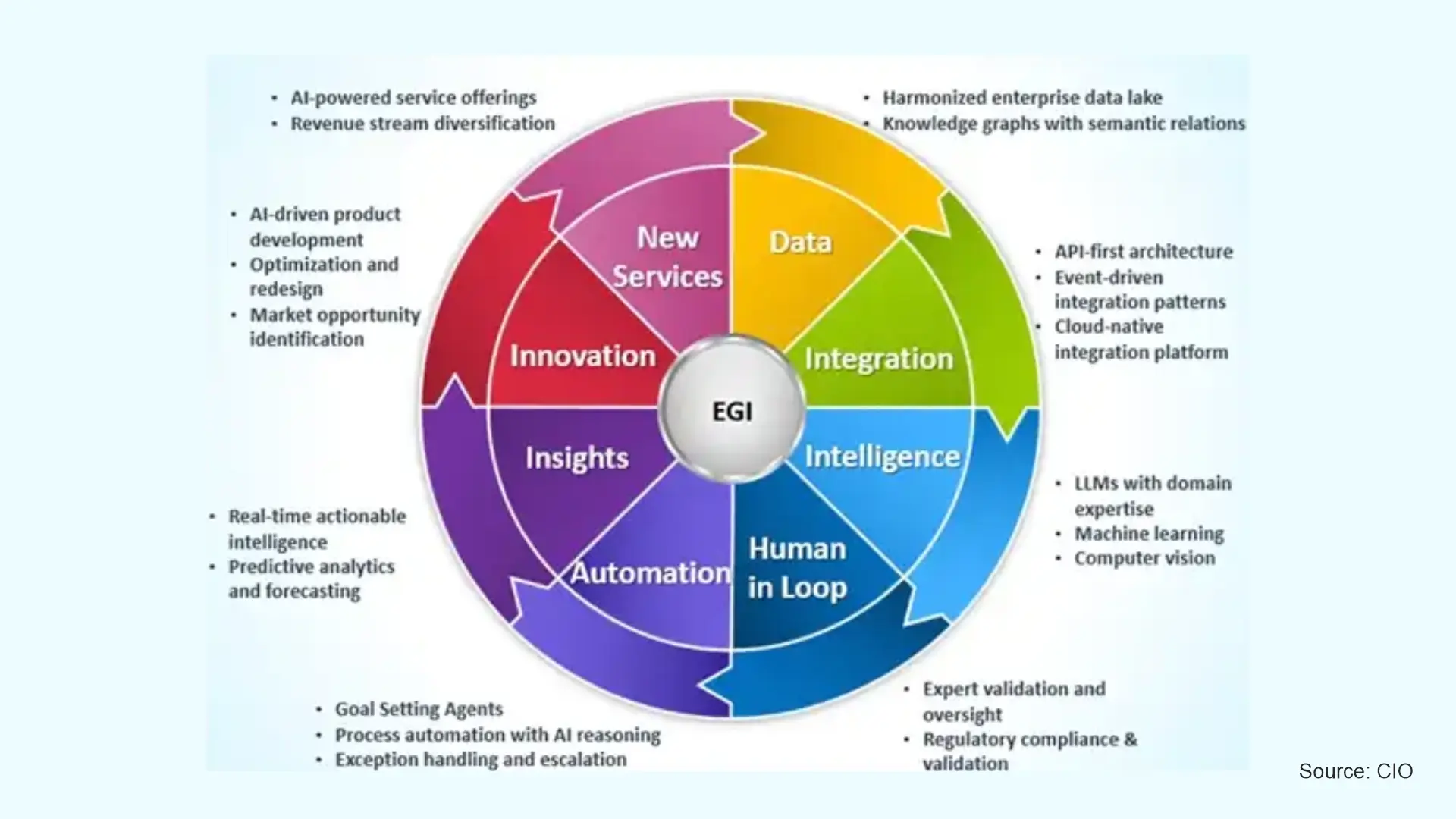
The rapidly evolving field of artificial intelligence is undergoing a revolution. Although the idea of artificial general intelligence (AGI) has received a lot of attention in the tech sector, enterprise general intelligence (EGI) is a more recent and important development that is taking place in businesses. Unlike AGI, which is still mostly theoretical, EGI is focused on AI systems that are designed for business applications and offer reliable and consistent performance across complex business scenarios.
According to McKinsey's 2025 Global AI Survey, 92% of companies plan to increase their AI investments over the next three years. With a compound annual growth rate (CAGR 2025-2031) of 26.60%, the market is expected to reach a volume of US$1.01 trillion by 2031 (Statista 2025). These numbers demonstrate that businesses are swiftly implementing AI solutions to improve operational efficiency, decision-making, and gain a competitive edge now rather than waiting for the theoretical promise of artificial general intelligence (AGI).
Understanding Enterprise General Intelligence (EGI)
The Enterprise General Intelligence, designed for business applications and exhibiting exceptional capability and consistency, general intelligence (GI) offers reliable performance in a range of complex business scenarios while blending in seamlessly with existing systems.
The focus of EGI is the Capability-Consistency Matrix, a framework that evaluates AI systems based on two essential dimensions:
These features ensure alignment with business objectives and build user trust by ensuring that EGI systems not only perform complex tasks but also do so consistently.
EGI vs AGI: Practical vs Theoretical
The difference between EGI and AGI must be made clear. EGI concentrates on useful, business-oriented AI applications, whereas AGI seeks to mimic human-level intelligence and is primarily theoretical. EGI systems prioritize scalability, dependability, and alignment with business objectives in their design for real-world enterprise deployment.
Phases of EGI Evolution
There are three main stages to the process of reaching EGI:
Building the Foundation for EGI
For EGI to be implemented successfully, a strong foundation must be established. Important components consist of
Businesses can establish an atmosphere that supports the effective implementation and expansion of EGI systems by concentrating on these fundamental components.
The 8 Pillars of Enterprise General Intelligence Transformation
Organizations can use an 8-pillar transformation model to strategically enact EGI. The 8 pillars include Data, Integration, Intelligence, Human-in-the-Loop, Automation, Insights, Innovation, and New Services, which form a self-sustaining intelligence flywheel.
Each of the pillars represents an important domain of enterprise AI, including: harmonizing data; building smart integration; ensuring human oversight; automating processes; generating meaningful insights; and delivering innovative services. Together, they ensure that the EGI system is capable and consistent, as well as scalable and aligned with business objectives.

The EGI Maturity Model
The phases that organisations go through when implementing and integrating EGI are described by the EGI Maturity Model:
This model ensures an organized and successful adoption process by giving organizations a road map to follow when they start their EGI journey.
EGI's Role in AI Strategy
A company's AI strategy must take into account several factors when integrating EGI:
Organizations can successfully incorporate EGI into their AI strategies by concentrating on these areas, which will spur innovation and keep them ahead of the competition.
AI Tools for AI Engineers
Enterprise executives and AI engineers are essential to the creation and deployment of EGI systems. Several AI tools are necessary to assist them in their work:
Furthermore, to verify proficiency in enterprise AI deployment, certifications for AI engineers are becoming crucial. Professionals can obtain structured training in AI models, tools, and enterprise applications through programs such as the Certified Artificial Intelligence Engineer.
It is the top AI ML Certification to improve credibility for spearheading AI initiatives in organizations while also fortifying expertise in AI strategy, Retrieval-Augmented Generation (RAG), and EGI evolution.
Conclusion
An important development in the use of AI in corporate settings is enterprise general intelligence. EGI systems offer useful solutions that promote productivity, creativity, and alignment with corporate objectives by emphasizing capability and consistency. The future of AI in business will be shaped by the increasing need for qualified personnel and efficient tools as businesses continue to incorporate EGI into their AI strategies.
Follow us: